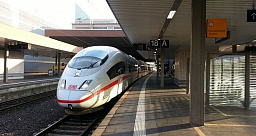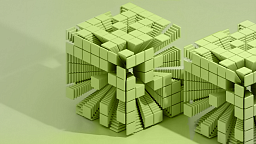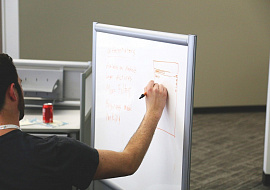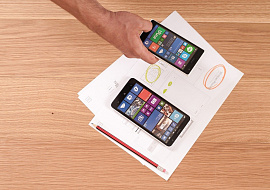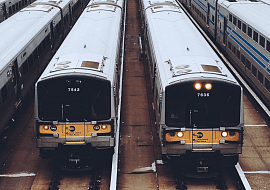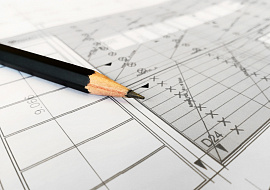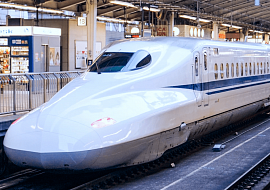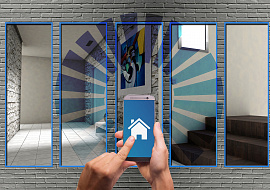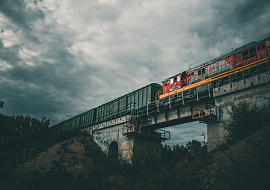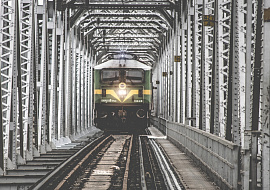Even an experienced driver should get used to working in new environmental conditions, considering specific in-cab systems, landscape features, railway congestion, and so on. Simulation allows the driver to train unexpected rail occasions finding ways to solve them. Such programs can also help the company to confirm drivers’ qualifications by testing their skills.
Railway simulation software: how it helps improve business strategy and safety
After setting the initial parameters, simulation can predict how the system should behave in various situations and, therefore, what can go wrong. It allows the company to avoid critical issues and wasted budget. When it comes to railways, its designers, operators, constructors, and other interested parties have to consider all possible scenarios for the wayside equipment, interlockings, trains, stations, and so on. That’s why rail companies increasingly implement railway simulation software both for their design projects and for controlling the operations in real-time. However, off-the-shelf solutions are often not enough for rail simulation, so it is common to deliver custom railway software design.
Railway simulation software solutions can be considered for the particular station, rail line, train depot, or the system of the railroads. Depending on the business goals and budget, a company can include various parameters to the simulation, such as train size, materials of the wayside equipment, rail resistance, outside temperature, etc. The more parameters that are considered, the more accurate forecasts a company can get in the future. It can help them avoid such common challenges as station throughputs or signaling failures, as well as enormous expenses on maintenance of the station.
What is the real potential of simulations for the railways? How can companies utilize it reasonably? What can be used to model the station most accurately? In this article, PSA discusses how simulation software for the railways can be successfully implemented.
Rail station design
Before preparing detailed plans and calculations it might be necessary to check their use and safety. At the design stage the simulation software can play several important roles, providing analytics and communication on the project.
- Analytical tool. The ultimate goal of using an analytical tool for business is to maximize project performance. Utilizing simulation solutions at the design stage is needed to try various scenarios, equipment, materials, locations, train departures, etc. These solutions can be implemented both for the construction of the new station together with the commissioning of new facilities, or reconstruction of the existing one since the station might get new elements. At this stage, the company can exclude invalid ideas and continue to develop the project tested in a simulation environment.
- Communication tool. A railway station plans, diagrams, drawings, and calculations related to them are clear for rail engineers, but not for every interested party on the project. The contractor and customer, as well as the designer, can understand each other better by having information presented in a simulation form. Besides, simulation is a flexible environment. When changes are going to be made in the project, it is convenient to implement them in the simulation first to test their viability. The simulation shows all the participants of the project if the offered feature is likely to be implemented or not.
At this stage, modeling helps to understand which projects should be implemented while eliminating ideas that do not work. This means a better return on investment because you know which projects are better to invest in. In addition, if a company owns or builds a large number of railroads, it would be convenient and fast to build models based on the same parameters.
Personnel training
The other crucial moment before starting the exploitation of the rail line is to consider the human factor – the most unpredictable one by default. The majority of rail accidents still happen due to a person’s mistake which makes it obligatory to minimize them. So, staff need to be trained in a risk-free environment that is maximally similar to the real track conditions like simulators are. A simulation environment for rail can be used to train:


Before inspecting the locomotives onsite, technicians might prove how they can find the issues virtually. For instance, identify the optimal brake pressure, ensure correct release, etc. This also helps to try various unexpected breaking that might happen on the railroad.
These days when the classical educational model has been transformed into digital, it would be more familiar for young employees to train using 3D modeling simulators. Thus, it wouldn’t be a problem for them to acquire simulators. At the same time, such instruments allow the company to save money and time on complicated training equipment, and trips on-site, as well as promote safety.
Route optimization & fleet management
Another area of utilizing simulation software for the railroad is improving existing operations. In this case, the model is built for the already functioning system. Simulation can be implemented to predict issues connected with the exploitation of the rail line. The goal of such simulations is to identify bottlenecks and try specific solutions to get rid of them. The simulations also work great on an already running line in a running passenger and freight trains where reliability and regularity must be observed. Simulations can show how to use resources such as locomotives and depots properly, presenting designs and operational concepts using engaging visuals.
For passenger transportation, it can help avoid delays by simulating and analyzing stations’ throughputs. For logistics it can help improve the supply chain, establish regular deliveries and minimize the risks of delays by simulating various scenarios and also connected with station throughput. So, the station is optimized with an informed placement of tracks and platforms.
Commercial simulating tools can’t always manage with complicated logistics of the railway track and the railroad’s infrastructure, different lengths of sidings on the railway corridor, or high train density. Exploring different ways can help operate trains more economically changing fleet maintenance modes, scheduling strategies, depot capacity, quickly and securely in a digital environment.
Need help?
A digital twin of the railroad – improved railway simulation software
The greatest potential of simulation for railways is revealed in the concept of the digital twin. A digital twin within the railway object is a software representation of the rail station or line, describing all the processes inside and connected with the environment. Such simulations can be built either at the design stage of the rail project or during the exploitation of the rail line. Regardless, this helps predict issues before they occur. Now the digital twin is the most accurate method to forecast possible issues. Unlike simple modeling, a digital twin is a complete digital copy of an object that takes into account its interaction with the environment to accurately simulate a train operating over a given track geometry.
To “read” the data from the physical object such as a wheel or a track section, it is necessary to equip the railroad with sensors that push it to the full-fledged IoT ecosystem. For example, sensors embedded in concrete walls can determine how much the walls are under deformation, thereby determining the external stress in the tunnel and transmitting it in real-time to the twin; also, humidity, temperature, and so on - conditions are important. For data processing and analysis, it is necessary to use cloud computing, powerful enough to perform calculations on the entire railway. Thus, the company can create simulations that predict the system’s behavior in physical reality. This can help to improve:
- Design
- Functioning
- Maintaining
- Planning
Utilizing the digital twin properly will ensure that you are on the right track to developing a product that is 100% compatible with the environment, is user-friendly, and designed to last. It shows how successful design is in a specific environment. It also gives the company an understanding of how best to use resources, personnel, and capital projects. For instance, a famous Elizabeth line in London – that is all duplicated in digital twin – was completed before the rail line was built.
Digital twins imply utilizing various technologies such as machine learning, artificial intelligence, and big data analysis. To make a twin of one line it is necessary to simulate all its components: from bulbs to cables. When it is completed, the operator can monitor the whole system and its parts in real-time. And control. Such a model won’t stop building until the system stops its activity.
It’s interesting to note, that despite the significant costs of implementation, the company won’t spend much on its maintenance. It would be much more expensive to get acquainted with all the contractors regarding the details of the line or station. So, it is cost-effective to take decisions both in real-time and from a long-time perspective while various parameters can be considered whether the project is environmentally friendly or not.
A digital twin is a determined result of the whole IoT ecosystem implementation. When the data are collected, processed, and analyzed, it is convenient to see all possible issues in visual representation.
Conclusions
Simulation software helps to get a holistic view of the operation of the station or the whole line. During railroad simulation implementation, remember the following:
- Depending on the business goal, the company can include various parameters in the model. However, the more detailed the simulation is, the more accurate and versatile predictions can be made.
- The simulation solutions go well with Enterprise IoT solutions, leveraging their analytical potential. Thus, the company can build the detailed digital twin of the rail object to see how certain changes can affect it
- Entrust your rail simulation project to a company that is experienced in rail. The rail industry has too many standards, nuances, etc that can take a lot of time for the general software company to study all them.


